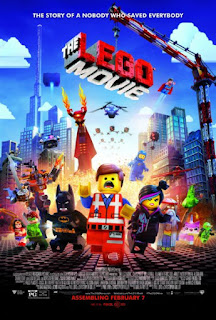Film Review: Quentin Tarantino’s “Pulp Fiction” (1994)
 |
| Figure 1. “Pulp Fiction Poster” |
In all of Tarantino’s film career, “Pulp Fiction” (1994) has to be one of his most notorious and possibly controversial works to date.
Set within the world of drug dealers and gangsters, in the dark crevices of Los Angeles, Tarantino opens the scene with a dictionary definition of the word, pulp. The scene then opens up to a conversation between a couple in an American diner. Ironically, this opening scene just so happens to technically be the last scene of this film, if you were to rearrange the film events into chronological order. As John McAteer so eloquently put, “Right from the opening title, the film emphasizes the multiplicity of possible meanings, and it ends with a discussion of an ambiguous event that may or may not have been a miracle.” (McAteer, J. 2015)
 |
| Figure 2. “Jules and Vincent” |
The movie is heavily dialogue based, and somewhat disjointed in the way it cuts from scene to scene. Each event is not displayed chronologically, which leads the film to then becoming postmodern. It defies the typical structure of any linear film narrative and causes its audience to work at paying attention, in order to try and understand the events of each scene. This can be related back to Jean-Francois Lyotard’s theory in that Postmodernism can be deemed as being skeptical about metanarratives. Jim Powell states that, “Postmodernism questions the whole notion of dominance. For instance, it questions the idea that one grand story can dominate smaller ones. It questions the idea that there is a hierarchy of stories, with the grand narratives on top and the smaller ones lower down on the totem pole.” (Powell, J. 2008) It is noticeable that in “Pulp Fiction” (1994), the film is made up of a series of smaller stories that interlink and thus create a bigger picture of the entire situation.
 |
| Figure 3. “Marsellus and Butch” |
It has also been noted that “Pulp Fiction” (1994) tends to pay homage to previous films and texts with its ironic use of clichés and references. As Glenn Ward described one his publication, “We suspect that he [Tarantino] knows little about the criminal underworld which the film seems to portray and that he is dealing almost entirely in cinematic signs, quotes and clichés.” (Ward, G. 2010) Regardless of whether the viewer understands the references or not, the intertextuality plays a key factor in making this film postmodern. It could be argued that postmodernism claims that nothing is really original, and that reality is ambiguous and is essentially left to the interpretation of the individual, as is the case with “Pulp Fiction” (1994); it can be ‘constructed’ by the viewers interpretation, but can just as easily be deconstructed by another.
In conclusion, it could be perceived that Tarantino is using the media of film, with his incredulous scripts and enthusiastic use of external references, to ensure the audience looks deeper into the film and starts to questions, not only the scenes of the screen, but also what is happening in the world outside of the cinema.
Bibliography
Powell, J. (2008) “Postmodernism for Beginners” Published: New York, by For Beginners ; London : Turnaround [distributor], Originally published: New York, by Writers and Readers (1998) (Accessed on 13.10.19)
Ward. G (2010) “Understand Postmodernism”, 2nd Edition, Published: London, by Teach Yourself (Accessed on 13.10.19)
McAteer, J. (2015) “Three Stories About One Story: Postmodernism and the Narrative Structure of Pulp Fiction” (2015) In: https://www.academia.edu [Online] At: https://www.academia.edu/8365999/Three_Stories_About_One_Story_Postmodernism_and_the_Narrative_Structure_of_Pulp_Fiction_ (Accessed on 13.10.19)
Illustrations
Figure 1. “Pulp Fiction Poster“ (1994) [Movie Poster] At: https://www.imdb.com/title/tt0110912/mediaviewer/rm1959546112 (Accessed on 13.10.19)
Figure 2. “Jules and Vincent“ (1994) [Movie Still] At: https://www.indiewire.com/2017/02/quentin-tarantino-pulp-fiction-sequel-john-travolta-samuel-l-jackson-1201777567/ (Accessed on 13.10.19)
Figure 3. “Marsellus and Butch” (1994) [Movie Still] At: https://www.scoopwhoop.com/What-Was-In-Marsellus-Wallace-Briefcase-In-Pulp-Fiction/ (Accessed on 13.10.19)



Comments
Post a Comment